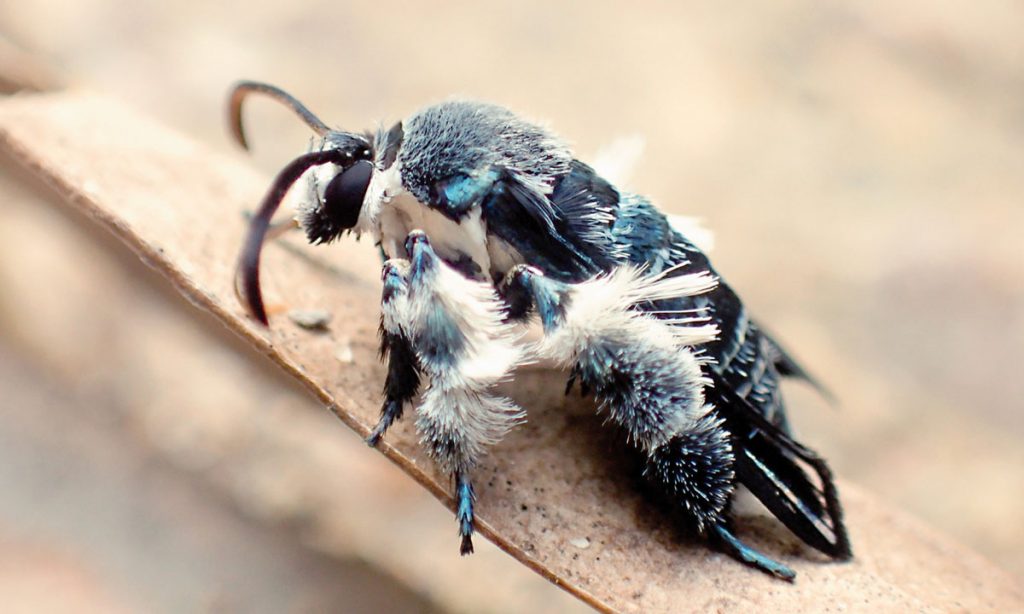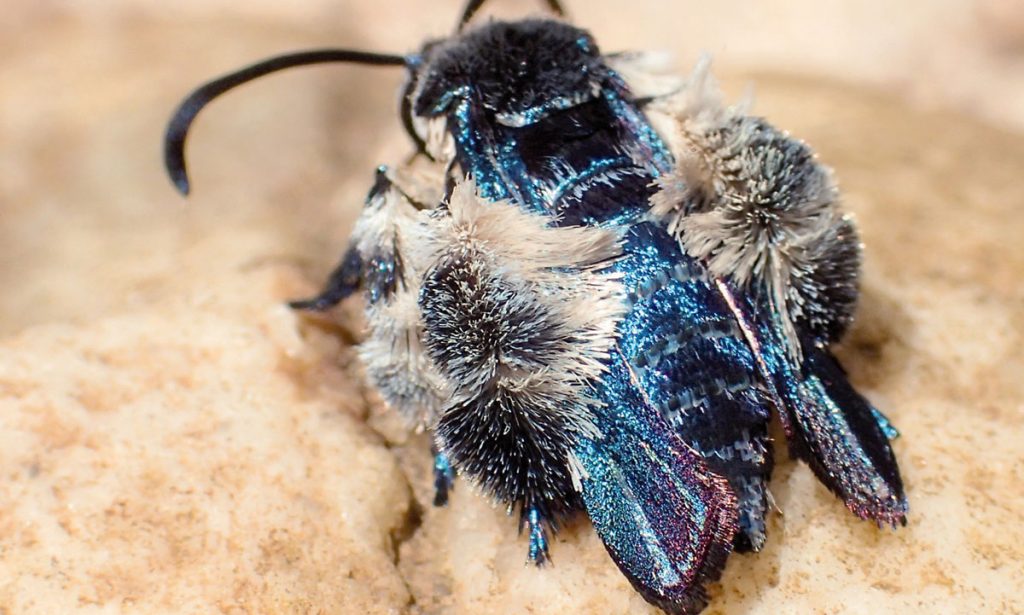
A rare Malaysian moth species that was previously known only from a 130-year-old specimen has been rediscovered by Polish researchers.
The Oriental blue clearwing (Heterosphecia tawonoides) doesn’t look much like most moths. It mimics a bee, in both appearance and behavior, to avoid predators. The clearwing has elongated scales on its legs that look like a bee’s fur to predators like birds and buts. The moths also have striking metallic blue bands on their abdomens, a color found in many Southeast Asian bee species.
Unlike most other types of moth, the clearwing flies only during the day like its bee friends. Dr Marta Skowron Volponi, a postgraduate researcher at the University of Bialystok who observed the moth in Malaysia’s Taman Negara National Park, reported in the journal Tropical Conservation Science that the clearwing mimics a bee’s zig-zagging flight pattern, and may even make a buzzing sound.

Volponi theorizes that clearwings do all this mimicry — and even hang out with real bees and wasps — to evade predators looking for an easy meal and unwilling to risk a sting in the mouth.
“The Oriental blue clearwing is just two centimeters in size, but there are so many fascinating things about them and so much more we hope to learn,” Volponi said in a press release.
Volponi and her fellow researchers haven’t yet determined the conservation status of the Oriental blue clearwing, which seems to prefer living along the banks of waterways in Malaysia’s rainforests. The long-lost species might be at risk all over again thanks to Malaysia’s deforestation rates, which are among the highest in the world. And unfortunately, loss of habitat isn’t something the moth can hide from, awesome bee costume or not.




